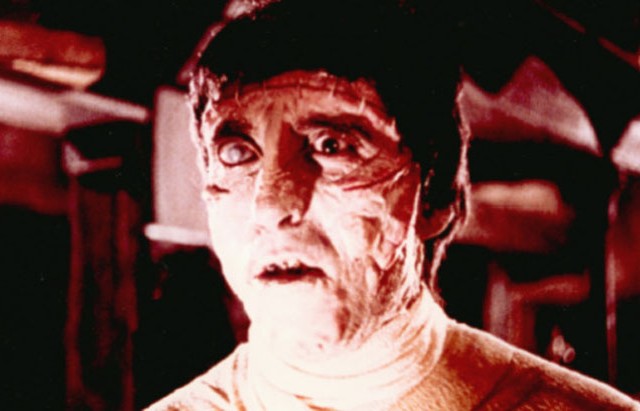Date/Time
Date(s) - Tue. Nov. 9, 2010 - Tue. Nov. 23, 2010
12:00 am GMT
Location
Blue Sunshine
3660 Boul. St. Laurent
Montreal, Quebec,
Instructor
Mario DeGiglio-Bellemare
Admission
“I went to see Dracula, a Hammer film, prepared to enjoy a nervous giggle. I was even ready to poke gentle fun at it. I came away revolted and outraged… Laughable nonsense? Not when it is filmed like this, with realism and with the modern conveniences of colour and the wide screen.” – Nina Hibbin in The Daily Worker (24/05/1958)
This course will examine Hammer horror films through their most distinctive feature: the centrality of the monster. From the Italian monstrare (to show), the monster exists to be read: it warns and reveals. This course will read Hammer films through a look at its monsters – such as the Frankenstein monster, vampires, werewolves, zombies, mummies, devil worshippers, and of course, the Baron and Count – as an essential ingredient in the studio’s massive success in the 1950s through to its ultimate decline in the 1970s. The immense popularity of Hammer horror within the youth culture of the late-1950s, and the outright dismissal of the films by the British critics at the time, can be linked in part to a radical shift in the construction of its monsters. Unlike many of the horror films coming from the U.S.A. in the 1950s, Hammer monsters, like Christopher Lee’s Dracula (Terence Fisher, 1958), were “awe-ful” in a paradoxical or ambivalent way. In other words, fear of the monster (awful) is really a kind of desire (full of awe). Hammer visionaries of the 1950s and 1960s created monsters that creatively balanced characteristics of repulsion and attraction. However, this “paradox of the monstrous” began to come undone in the early-1970s, especially as it was linked to questions of woman’s agency and the fear of female sexuality.
The individual films examined in the course will be critically appraised within the socio-political, cultural, and historical context in which they were made and viewed. As a controversial yet popular cinematic form in the UK, Hammer horror films offer a resonant frame through which to analyze conflicting social controversies in the decade of the 1950s, 1960s, and 1970s, especially as they relate to questions of gender and sexuality. Using the definitions of the monster suggested by Jeffrey Jerome Cohen, in his essay “Monster Culture (Seven Theses),” this course will examine films from each of these decades in order to trace a history of “monster creation” in Hammer Studios.
Questions we will be asking:
What do Hammer monsters reveal to us about the attraction of evil? What do Hammer monsters reveal to us about the social disgust of women’s sexuality? How do Hammer monsters represent the paradox of the monstrous in different historical contexts? How do Hammer films represent the monster as “us”? How do Hammer films represent monsters as “them”? What is the difference?
Students aged 18+ who are enrolled in this course may also attend the supplementary screening of THE CURSE OF FRANKENSTEIN at Blue Sunshine on Friday November 19th at 8:30pm, free of charge.

